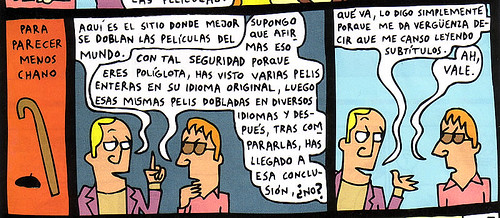Comunicación 24 horas al día, 7 días a la semana
Muy interesante artículo en LA Times sobre la comunicación continua entre adolescentes. Ya sea por mensajería instantánea, móviles o cualquier otro medio tecnológico, los amigos o la familia no andan nunca muy lejos:
In a not-at-all unusual month, Will Wu spent more than 10,000 minutes on his mobile phone – an average of 5 1/2 hours a day.
Sometimes he talked, sometimes he listened. But most of the time, the 15-year-old just dialed up a friend and left the phone on. Connected only by wireless headsets, Will and his pal spent entire days – together, but apart – shopping, snacking, doing homework and even nodding off to sleep.
«If I ever wanted to talk I could just say something into the phone and there’d be someone on the other end. You wouldn’t have to dial,» said Will, a sophomore at Miramonte High School in Orinda, east of San Francisco, whose Cingular Wireless calling plan includes free calls to any other Cingular customer. «Basically it was convenient.»
Like an increasing number of youths growing up in an age of cheap mobile phones and fast Internet connections, Will is connected 24/7 to family and friends through an array of gadgetry. So obsessed are teens with devices like digital music players, cellphones, digital cameras and hand-held organizers, that 15-year-old girls are now the world’s top consumers of computer chips, said Chuck Byers, director of global marketing at chip maker Taiwan Semiconductor Manufacturing Co.
Children these days get cellphones as early as elementary school and pick up computer-speak abbreviations – AFK for «away from keyboard,» for instance, or A/S/L, meaning «age/sex/location?» – at an age when they are memorizing state capitals for social studies class.
«Teenagers have adopted this technology very aggressively, in part because it’s inexpensive now, and it’s mobile – and everything a teenager does is about being mobile and untethered,» said David Greenfield, a professor of clinical psychiatry at the University of Connecticut. «With the complexity of our world and the scheduling kids have compared with 25, 30 years ago, it’s a newer way of connecting socially.»
(vía Smart Mobs)
—–


